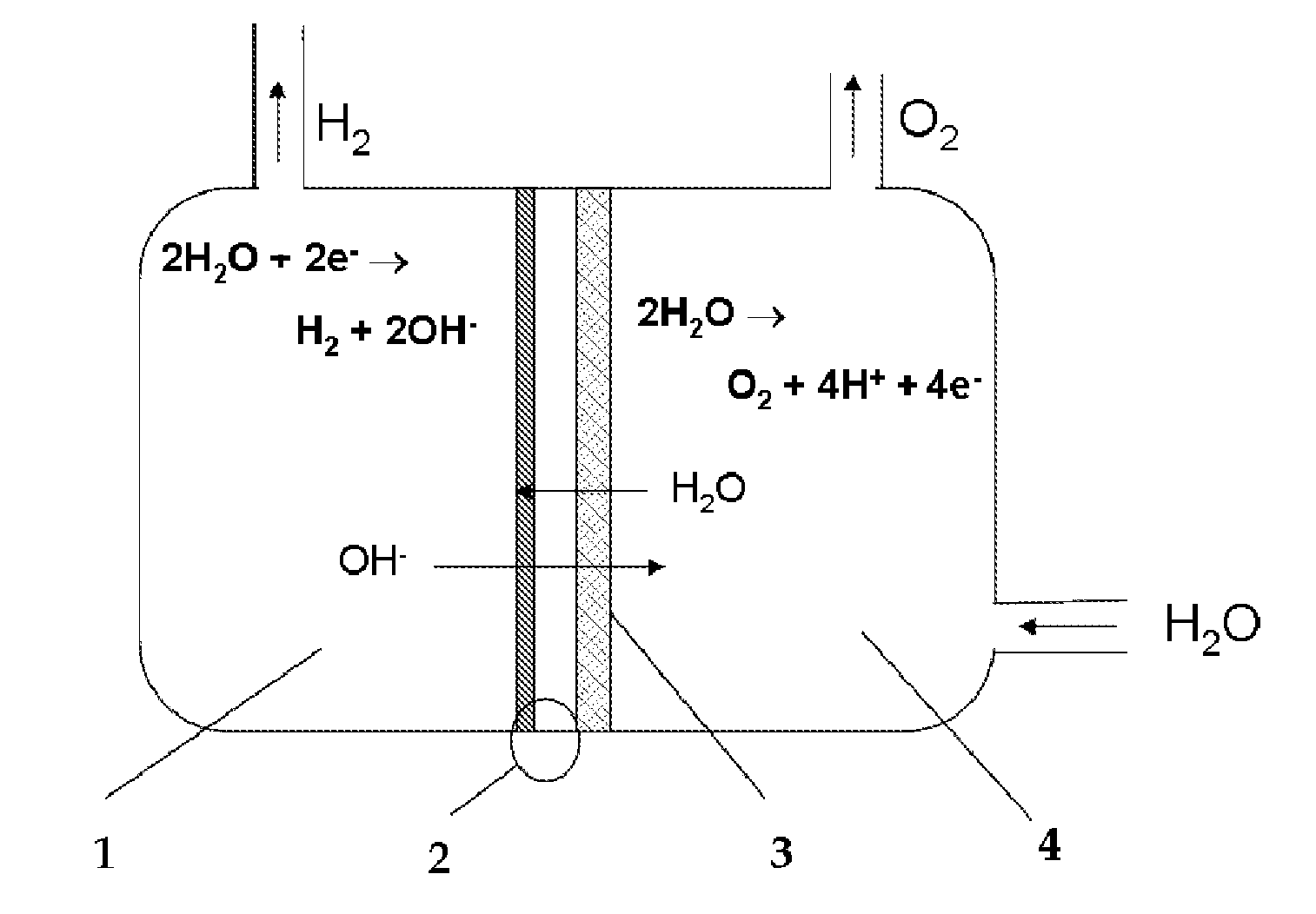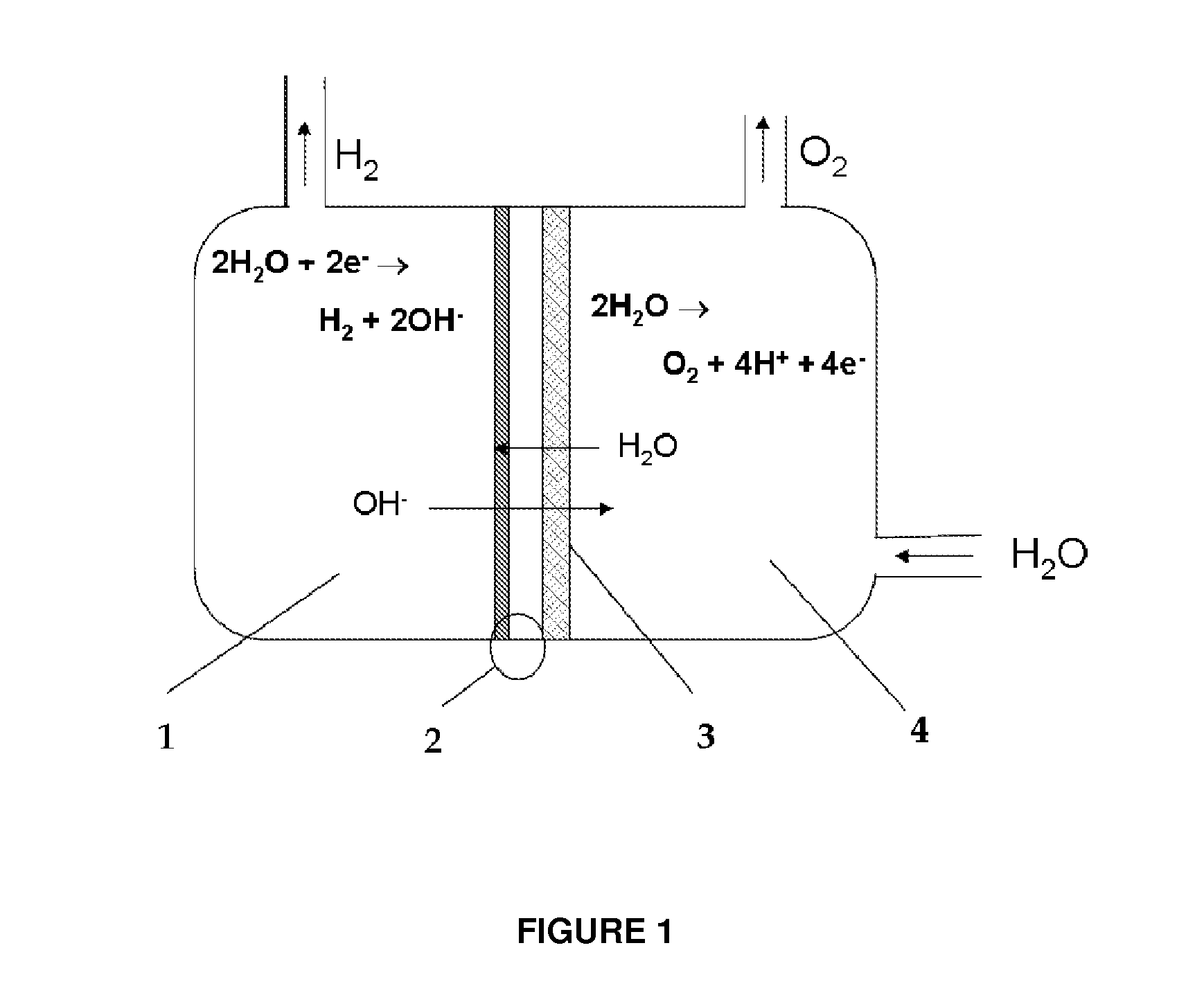Device for the production on-demand of hydrogen by electrolysis of aqueous solutions from dry cathode
a technology of dry cathode and electrolysis, which is applied in the direction of electrolysis process, electrolysis components, cells, etc., can solve the problems of affecting the industrialization of such devices, not being able to be coupled directly, and not allowing a defined physical separation of hydrogen and oxygen produced, etc., to achieve high purity
- Summary
- Abstract
- Description
- Claims
- Application Information
AI Technical Summary
Benefits of technology
Problems solved by technology
Method used
Image
Examples
example 1
Production of the Anodic Electrode
[0038]4.5 g of CuSO4.5H2O and 10 g of CoCl2.6H2O were dissolved in 200 mL of distilled water. This solution was added to a solution of 12 g of Na2CO3 dissolved in 150 mL of distilled water. The precipitate formed was filtered and washed with water. The powder, after being dried in vacuum oven, was pyrolized at 400° C. for 5 hours in air. The mixture was mixed with Teflon 10 wt % in distilled water, in amount sufficient to obtain a spreadable paste. This paste was applied on a net of metallic nickel.
example 2
Production Membrane Cathode Electrode Assembly
[0039]An anion exchange membrane Acta M6 (prepared similarly to Example 1 of patent WO2009 / 007922, sample SBSF14) in circular shape of diameter 50 mm is pre-treated for 1 hour with a 1 M KOH solution to enable the exchange of the membrane to a hydroxylic form, and then fixed within a circular hollow mold with inner diameter of 48 mm and there sealed.
[0040]A solution made by 2 g NiSO4.6H2O, 2 g NaH2PO3, 5 g of sodium citrate dissolved in 100 mL of distilled water and then added with ammonium hydroxide to pH 10 is placed inside a mold cavity, in contact with one surface of the membrane. After 1.5 hours the solution is removed from the mold and the membrane is then rinsed three times with deionized water.
example 3
Device Assembling
[0041]One of the favorites assembly of cell is obtained placing in direct contact the assembled MEA 2, metalized only on cathode side (as described in Example 2), with the anode 3, made in accordance with Example 1. The anodic half-cell 4 is fed with an alkaline solution and the cathodic half-cell contains only the hydrogen produced by electrolysis process.
PUM
| Property | Measurement | Unit |
|---|---|---|
| Temperature | aaaaa | aaaaa |
| Electric potential / voltage | aaaaa | aaaaa |
| Concentration | aaaaa | aaaaa |
Abstract
Description
Claims
Application Information
 Login to View More
Login to View More - R&D
- Intellectual Property
- Life Sciences
- Materials
- Tech Scout
- Unparalleled Data Quality
- Higher Quality Content
- 60% Fewer Hallucinations
Browse by: Latest US Patents, China's latest patents, Technical Efficacy Thesaurus, Application Domain, Technology Topic, Popular Technical Reports.
© 2025 PatSnap. All rights reserved.Legal|Privacy policy|Modern Slavery Act Transparency Statement|Sitemap|About US| Contact US: help@patsnap.com


